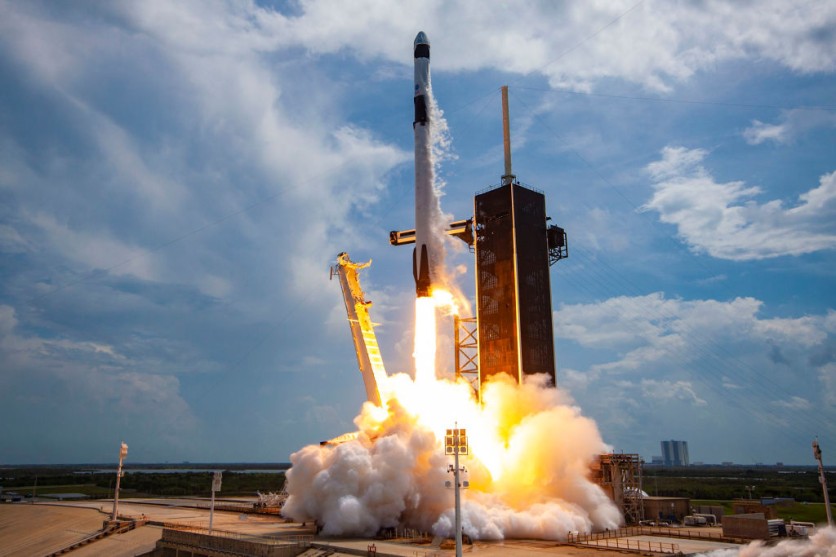SpaceX is gearing up for launch, as a Falcon 9 rocket is set to embark on its mission to send 23 Starlink internet satellites into the depths of space, Space.com reports.
This marks the second launch of the day, and if all goes according to plan, it will be a stunning doubleheader for the private space exploration company.

Double Mission Day for SpaceX
The SpaceX Falcon 9 rocket is scheduled to take off from Cape Canaveral Space Force Station in Florida tonight, Oct. 29, at 7:45 p.m. EDT (2345 GMT).
However, there are seven backup opportunities available, ranging from 8:17 p.m. EDT to 10:47 p.m. EDT (0017 to 0247 GMT on Oct. 30), in case the initial launch window is missed.
As per SpaceX's mission description, coverage will begin around five minutes before liftoff on their X account.
Vertical Landing
One of the most exciting elements of this launch is the planned return of the Falcon 9's first stage to Earth. After completing its mission, this trusty rocket will attempt a vertical landing on the drone ship "A Shortfall of Gravitas," stationed in the vast Atlantic Ocean.
This particular first stage has quite the resume, with this launch marking its eighth flight and landing, showcasing SpaceX's commitment to reusable technology and cost-efficient space travel.
Approximately 65.5 minutes after liftoff, if all goes smoothly, the 23 Starlink satellites will deploy from the Falcon 9's upper stage into low Earth orbit.
This mission follows closely on the heels of a Sunday Starlink doubleheader, where SpaceX successfully sent 22 Starlink satellites into space from California's Vandenberg Space Force Base.
SpaceX's Growing Satellite Constellation
The Starlink project represents SpaceX's audacious endeavor to create a global broadband megaconstellation, delivering internet access to users around the world.
To date, they have launched more than 5,000 Starlink satellites into low Earth orbit (LEO), with plans for countless more in the future.
The company has secured permission to deploy 12,000 of these spacecraft, and they have even applied for approval for an additional 30,000, signaling their ambition to transform internet connectivity as we know it.
The launch tonight not only showcases SpaceX's prowess in executing complex missions but also underscores its commitment to the Starlink project. With each successful launch, they inch closer to making high-speed internet accessible to even the most remote corners of the globe.
In Other News
Researchers have unveiled a new computer simulation that resembles early universe conditions, reconciling it with observations made by the James Webb Space Telescope (JWST).
According to reports, preliminary Webb data suggested potential gaps in our understanding of early galaxy formation, with the first scrutinized galaxies appearing brighter and more massive than expected.
Stay posted here at Tech Times.

ⓒ 2025 TECHTIMES.com All rights reserved. Do not reproduce without permission.




